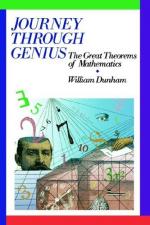
|
| Name: _________________________ | Period: ___________________ |
This quiz consists of 5 multiple choice and 5 short answer questions through The Bernoullis and the Harmonic Series.
Multiple Choice Questions
1. That properties of specific shapes were early Egyptians aware of?
(a) Pi and the diameter of a circle.
(b) Irregular solids.
(c) Right triangles.
(d) Parallelograms.
2. In general, what did Euclid's number theory describe?
(a) The relationship of fractions to decimals.
(b) The nature of measuring geometry.
(c) The nature of whole numbers.
(d) The relationship of decimals to integers.
3. Where was Archimedes born?
(a) Olympia.
(b) Sicily.
(c) Rome.
(d) Athens.
4. Which of the following is false about the modern implications of Euclid's number theory?
(a) Euclid gave a good idea for how to construct even perfect numbers.
(b) Great mathematicians continue to puzzle over some aspects of Euclid's number theory.
(c) Euclid's recipe for constructing even perfect numbers is incorrect.
(d) Whether there are no odd perfect numbers is still not known.
5. Which of the following was NOT defined by Euclid?
(a) Nominal numbers.
(b) Whole numbers.
(c) Even numbers.
(d) Odd numbers.
Short Answer Questions
1. Who was Neil's Abel?
2. What does the Pythagorean Theorem state?
3. Which of the following was one of Euclid's great theorems?
4. In his later life, what position did Isaac Newton hold?
5. Which shapes as described by Euclid, inspired the Greek philosopher Plato?
|
This section contains 343 words (approx. 2 pages at 300 words per page) |

|




